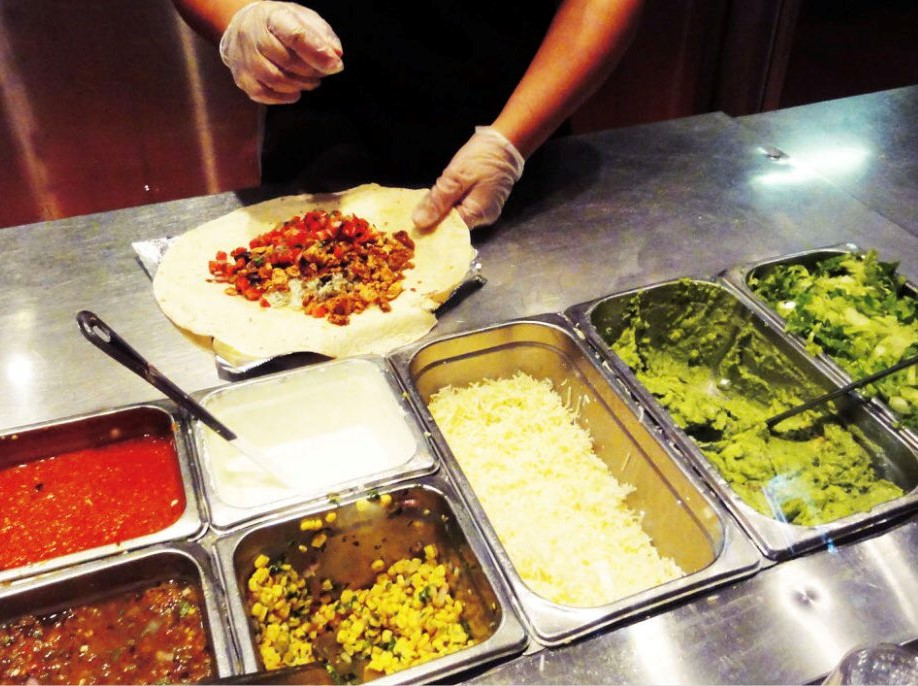In this era of data-driven marketing, all customers – B2B and B2C – are identified by marketers according to their place in a journey. If intent marketing once focused on making sense of a complicated business transaction, the fragmented omnichannel journey in a consumer purchase now requires intelligence of the same magnitude.
The particular stage where the customers are in their journeys affects the kind of message they should receive from marketers. Each company – a brand or a trusted retailer, say – knows their customers and how they typically settle on what they purchase. They have the data from previous purchases to figure out which promotions or messages work at the best time.
For an established quick-service destination like Chipotle, a vast audience of consumers provides the data on every aspect of the store experience and food.
By introducing delivery in 2018, Chipotle brought a new variable to their customer experience. Would delivery make customers more likely to purchase burritos more frequently? Would free delivery add value to products that Chipotle has traditionally resisted discounting?
As director of loyalty and CRM for Chipotle, Jason Scoggins has worked on many recent targeted promotions aimed at invigorating the chain’s customers.
He told me, “We know that free delivery is a great ‘unlock’ for loyalty.”
For a free delivery offer, he wanted to market to customers alongside interesting cultural moments. In June, the NBA Finals series between the Toronto Raptors and Golden State Warriors was underway.
“When we looked at this free delivery offer around NBA finals’ time, we knew that sports activations play really well,” Scoggins explained. “We are constantly looking at different ways to hack into the culture.”
He added, “We’re always looking at a broad audience, broadly the Gen Z and millennial audience, and hacking our way into Twitter and SMS.”
Full-court press on social and mobile
Chipotle called on Vibes, a mobile marketing solutions and engagement platform, to help implement the “Freeting” NBA Finals campaign. “Let’s a play game,” Chipotle tweeted. “Every time the announcers say FREE, we’ll tweet free burritos.”
With this messaging, the company drove to engage customers emotionally during a world-class sporting event, specifically on mobile devices – where customers are most likely to order quick-service food.
Longer-term, the free burrito promotion also sought to boost Chipotle’s loyalty program.
Vibes CMO Sophie Vu told me, “The Chipotle ‘Freeting’ campaign is a perfect example of how brands can create unique campaigns that engage and connect with their customers where they are already communicating – mobile messaging. Leveraging communications channels like SMS, MMS and mobile wallet lets brands have personalized, one-on-one interactions with customers.”
She explained, “When it comes to reaching consumers, we believe that it’s important for brands to pursue mobile-first marketing strategies as it is the preferred means of communication, especially among Chipotle’s core audience of Gen Z and millennials.”
The call to action tweeted out by Chipotle garnered three million texts from fans, or 315K per game. From those messages, Chipotle responded (through the Vibes proprietary Contest Engine powering the campaign) with 140K winners for a free burrito. The rest of the three million received a message that even though they didn’t win a burrito, they could still get free delivery.
Of the 140K winners, 87K wallet passes were downloaded, and a total of 75K (or 54 percent redemption rate) free burritos were redeemed.
With these metrics, Chipotle could see the impact of social media on fan engagement, nudging them toward further actions like downloading the wallet pass, making a free-delivery order, or redeeming an offer in-store. Each of these actions give more insight into the effectiveness of a particular channel on Chipotle’s customers. For instance, wallet expiration notifications – close to the July 14 end date – drove a 28 percent redemption lift.
Expanding the digital footprint
“Although email marketing casts a wide net, open and engagement rates are declining,” Vu said. “In contrast, mobile apps reach fewer people but tend to be the most loyal users. Right in between these two channels are text messaging and the mobile wallet, the sweet spot of modern mobile marketing. ?By combining the power of reach with mobile messaging and the strength of engagement through personalized content delivery in the mobile wallet, trusted brands can break through the clutter and be relevant.”
According to Scoggins, Chipotle’s digital sales nearly doubled last year. Delivery service, coupled with relevant promotions during key sports and cultural events, gets customers active within Chipotle’s digital footprint. “As the customer base continues to expand, people are really jumping into the digital experience,” Scoggins said.
“Free delivery really resonates,” he stated. “We just got into the delivery game in 2018, and because it’s still a new offering, we just see this as the direction that the industry is evolving in. It’s a great lever to pull from a marketing perspective, a way to offer value without discounting our food and brand. Chipotle can maintain pricing on core products but be able to discount on delivery. This keeps us consistent with our overall brand positioning.”
He also said that it’s Chipotle’s “goal to reach customers whatever channel they’re on.”
For Vibes, mobile messaging is “one part of the puzzle,” said Vu. The Vibes Mobile Engagement Platform uses SMS, MMS and RCS messaging, push notifications and mobile wallet, managing loyalty programs digitally, while also enabling personalized messaging.
“Our ultimate goal for the program,” said Scoggins, “is to increase in incremental frequency (of purchases), create a new menu item trail, while trying different channels, whatever individuals’ key moments are, and trying to incentivize that customer to use what works for them.”
|
READ NEXT: How to Build Consumer Trust with Mobile Loyalty Programs
|








